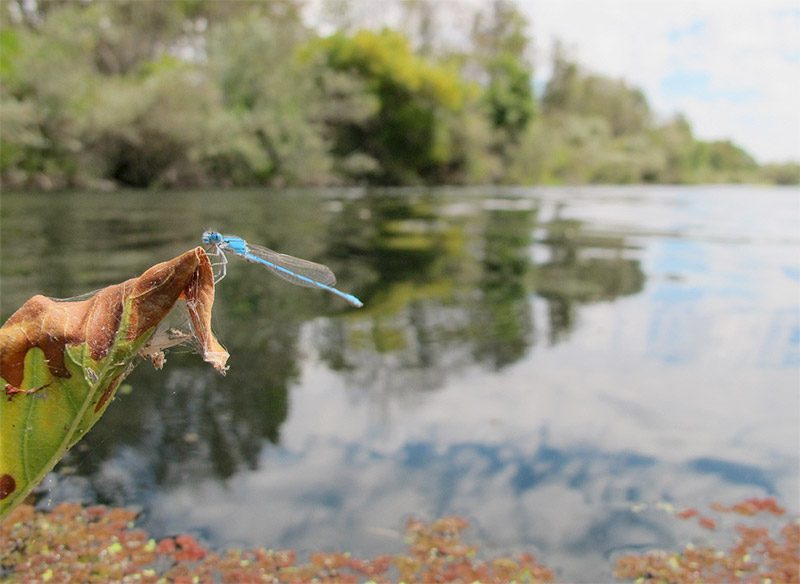Wednesday August 29, 2012

As you probably know by now, FISHBIO spends a lot of time outdoors and we get to see all kinds of interesting things. Recently, during a summer snorkel survey, we spotted a damselfly hanging out along the river. A damselfly can usually be identified by the position in which they lay their wings. In most cases dragonflies spread their wings when not in flight, while a damselfly will lay them back alongside the body. Mature damselflies, much like dragonflies, pair up for mating while in flight. The females then deposit the eggs on plants and floating vegetation, or directly in the water. After hatching the larvae settle down in the water, where they will spend much of their life undergoing several phases of development. Finally they emerge in spring and summer, ready to feed on small insects like mosquitoes and gnats, reproduce, and eventually die. The larvae and adult damselflies are important food sources for fish, birds, amphibians, and other animals. The presence and abundance of damselflies can also serve as an indicator of water quality.
